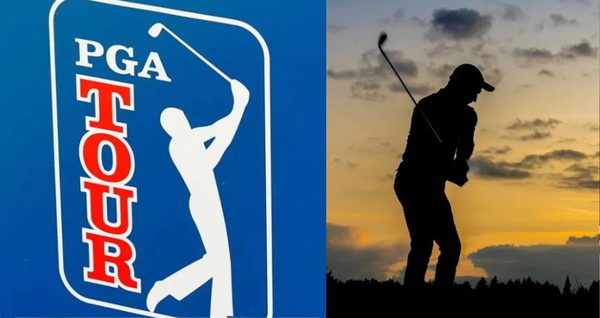

How long should it take for a player to clear a round? On the PGA Tour, the answer should be simple: long enough to get it done without pushing fans’ patience to the brink. Unlike the TGL, where the clock starts ticking at just 40 seconds, the PGA Tour often feels like a test of patience for everyone watching. Moreover, this year’s Farmers Insurance Open is the latest example of slow play grabbing all the wrong headlines. Let’s pace it up, guys!
It’s not like the tournament hasn’t already dealt with enough drama. Between weather disruptions and players’ withdrawal, Torrey Pines has had its fair share of chaos. But the slow play during the final round might just be the most frustrating part of all.
As predicted earlier, the wind was a major factor during the last round, slowing decision-making and frustrating everyone watching. The final group of Harris English, Andrew Novak, and Aldrich Potgieter took nearly three hours to finish their front nine. Yes, you read that right. It was so awful that CBS’s Dottie Pepper had to call it out during the broadcast.
ADVERTISEMENT
Article continues below this ad
Watching the group waiting for 15 minutes on the par 3 third hole on Saturday, Pepper didn’t mince her words, pointing out how frustrating the pace of play was. While talking with her colleague Frank Nobilo, she said: “You know Frank (Nobilo), we’re starting to need a new word to talk about this pace of play issue and its respect for your fellow competitors, for the fans, for broadcasting. It’s just got to get better.”
This frustration isn’t new. Just last week, the final round at the American Express stretched nearly 30 minutes past its broadcast window. And this week? The final group trudged through their round at a snail-like six-hour pace. It’s hard not to wonder if anyone is actually doing something about this problem.
Obviously, it had social media buzzing, and former LIV golfer Pablo Larrazabal chimed in with his take, pointing fingers at a deeper issue. He thinks the problem starts with mental coaches teaching players to wait until they feel “100% ready” before making their shot. And honestly, he’s not wrong. Players obsessing over getting everything just right might make sense to them. But for everyone else, it’s painfully slow to watch.
Not only the PGA tour. Our game has a problem with pace of play and start with some of the mental coaches in the University that say “don’t hit it until you are 100% ready”… https://t.co/gZ4wLjfcnj
— Pablo Larrazabal (@plarrazabal) January 26, 2025
Tiger Woods‘s TGL undoubtedly proved some strict rules, like implementing the shot clock could improve the game. Even Patrick Cantlay, who’s booed for his notoriously slow play, managed to pick up the pace during his TGL round—all thanks to the shot clock.
What’s your perspective on:
Should the PGA Tour adopt a shot clock like TGL to keep fans engaged and excited?
Have an interesting take?
Now, this is exactly what the PGA tour needs; a rule that creates enough pressure to speed things up and keep the game moving. Of course, not everyone is on board with the idea.
Justin Thomas has his own theory on introducing a shot clock in the PGA tour
If you’re wondering whether a shot clock could actually make its way to the PGA Tour, Justin Thomas has a take that might leave you thinking. When asked about it during an interview, JT sounded far from convinced.
When asked about the possibility of implementing a shot clock on the PGA Tour, Thomas gave a diplomatic yet honest response. It’s tough,” he admitted.
ADVERTISEMENT
Article continues below this ad
“You have to make such drastic changes for it to be noticeable. Pretty much a lot of the conversations end the same way; it’s like, what are we trying to accomplish here? Are rounds going to be 12 minutes faster? Are they going to be 20 minutes faster? It’s hard to realistically make a big enough difference where people are like, ‘Wow, this is great. Rounds are only three hours now, or three and a half hours instead of five. You know what I mean? It’s really hard to make that big of a change,” Thomas said.
JT has a point. Fans want faster rounds. sure. But they also love watching players take on challenging courses. It’s a tough balance. As Thomas explained, “Look, there definitely could be some things here and there that are done, but it’s also — I think there’s, like, a Fan Forward survey that the TOUR does with fans. They like harder golf courses, they like watching us play difficult places, but they want us to play faster, so those two don’t go together. You’ve kind of got to pick and choose your battles.”
Still, not every player feels the same way. Take Rickie Fowler, for instance. He’s all for it. When asked about a shot clock, Fowler didn’t hesitate: “Shot clock, no question.”
ADVERTISEMENT
Article continues below this ad
So, while Thomas is skeptical about the logistics, players like Fowler seem ready to embrace the change. Fans clearly want rounds to wrap up on time, but getting the PGA Tour to move at TGL speed? That’s a challenge Jay Monahan and Co. have yet to solve.
ADVERTISEMENT
ADVERTISEMENT
ADVERTISEMENT
ADVERTISEMENT


Should the PGA Tour adopt a shot clock like TGL to keep fans engaged and excited?